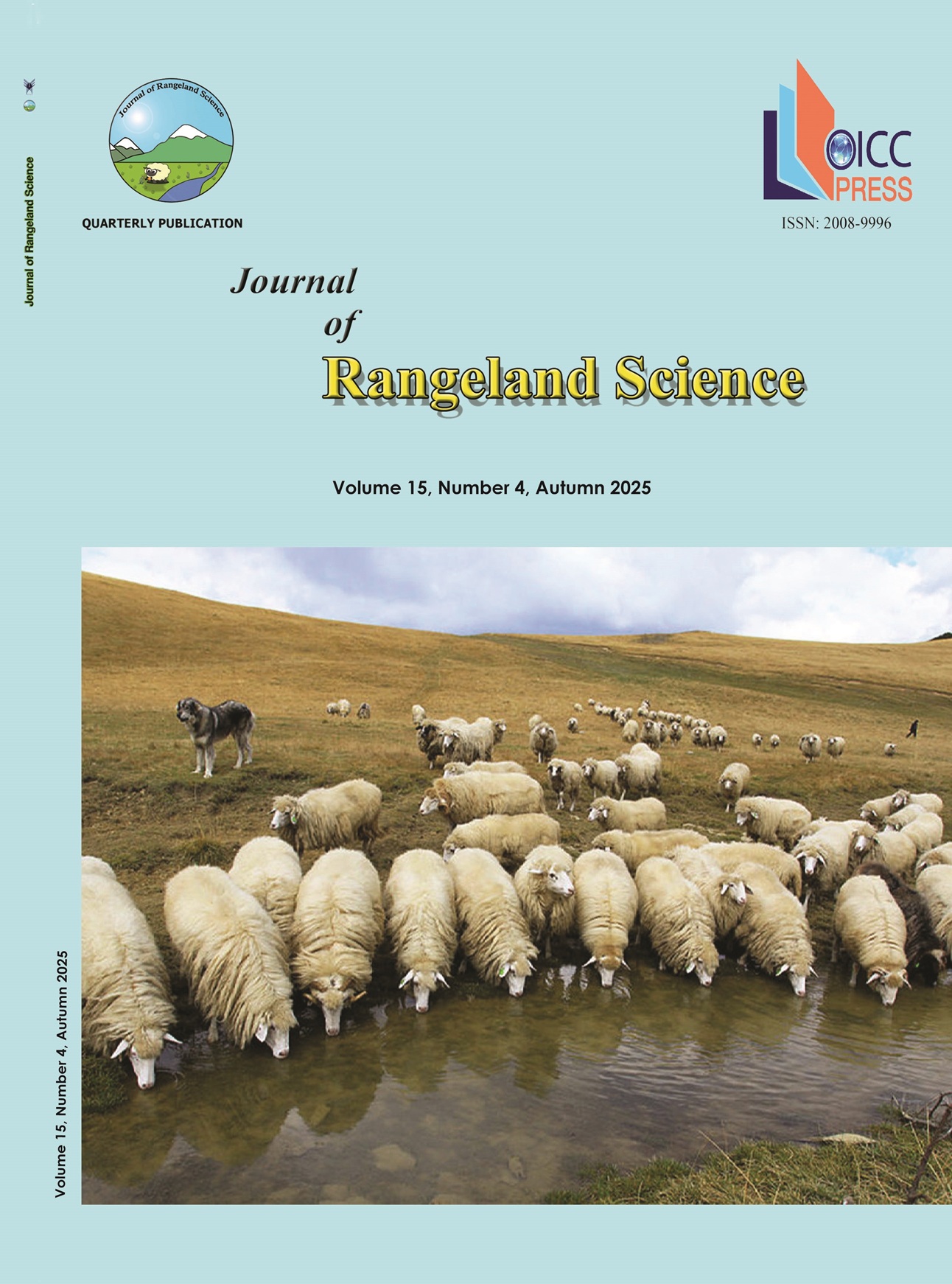Role of woody plants in dust absorption and identifying dust centers in Ahvaz city, Iran
- Department of Environmental Science and Engineering, Faculty of Agriculture and Environment, Arak University, Arak, Iran
- Department of Biology, Faculty of Sciences, Sakarya University, Sakarya, Türkiye
- Department of Horticultural Science, Faculty of Agriculture and Natural Resources, Arak University, Arak, Iran

Received: 2024-02-13
Revised: 2024-06-19
Accepted: 2025-03-02
Published in Issue 2025-09-14
Copyright (c) 2025 Marzieh Hoseini, Azadeh Kazemi, Morteza Naderi, Mina Taghizadeh (Author)

This work is licensed under a Creative Commons Attribution 4.0 International License.
How to Cite
PDF views: 49
Abstract
Dust is an atmospheric phenomenon that has a negative impact on the environment. Less noticed, the dust particles cause respiratory and cardiovascular health problems in the citizens of western and southern regions of Iran. One of the actions could be to plant trees that are compatible with the climate of these regions. To investigate the role of woody plants in identifying and controlling dust centers, the leaves of four tree species (Albizia lebbeck, Eucalyptus camaldulensis, Conocarpus erectus and Cordia myxa) were sampled in four regions representing 9 geographical directions (center, main and secondary regions) in Ahvaz city, Iran. Leaf area and dust concentration were spatially analyzed in the laboratory for three seasons, i.e., spring, summer and autumn 2021. The Inverse Distance Weighted (IDW) interpolation method was used to map pollution. The results showed that C. erectus and C. myxa had the highest dust binding efficiency with average values of 1.066 and 0.976 mg/cm2, respectively, followed by A. lebbeck and E. camaldulensis with average values of 0.290 and 0.478 mg/cm2, respectively. The results of dust distribution zones showed that domestic dust sources were significantly high in the southwestern and southeastern regions with average values of 1.880 and 0.869 mg/cm2, respectively. Planting trees such as C. erectus, A. lebbeck and C. myxa in urban environments was suggested as an efficient method for dust control in the region.
Keywords
- Dust pollution,
- Woody Plants,
- Bio detection,
- Interpolation,
- IDW Method
References
- Dinarvand, M., Keneshloo, H., Fayaz, M., Khaksarian, F., Arami, S.A. and Haydari, K., 2023. Species Diversity of Desert and Relationship to Soil Properties in Dust Sources of Khuzestan, Southwest of Iran. Journal of Rangeland Science, 13(3): 1-12.
- Diaconu, M., Lucian, V., Raluca-Maria, H., Mihaela, R., Daniela I. F., Markus, L., Philippe, X. C., and Maria G., 2020. Characterization of heavy metal toxicity in some plants and microorganisms—a preliminary approach for environmental bioremediation. New Biotechnology, 56: 130-139.
- Howsama, M., Jones, K.C. and Ineson, P. 2000. PAHs associated with the leaves of three deciduous tree species. I—concentrations and profiles. Environmental pollution, 108(3): 413-424.
- Kumar, A., Gupta, I., Brandt, J., Kumar, R., Dikshit, A.K. and Patil, R.S., 2016. Air quality mapping using GIS and economic evaluation of health impact for Mumbai city, India. Journal of the Air Waste Management Association, 66(5): 470-481.
- Long, F., Zhu, A., and Shi, H., 2013. Recent advances in optical biosensors for environmental monitoring and early warning. Sensors, 13(10), 13928-13948.
- Mussali-Galante, P., Tovar-Sanchez, E., Suarez-Rodriguez, R., Ramirez-Trujillo, A., Valencia-Cuevas, L., and Hernandez-Plata, I., 2019. The Use of Biosensors for Biomonitoring Environmental Metal Pollution. A chapter in Biosensors for Environmental Monitoring from Intech Open.
- Nawaz, M.F.; Rashid, M.H.U.; Saeed-Ur-Rehman, M.; Gul, S.; Farooq, T.H.; Sabir, M.A.; Iftikhar, J.; Abdelsalam, N.R.; Dessoky, E.S. and Alotaibi, S.S., 2022. Effect of Dust Types on the Eco-Physiological Response of Three Tree Species Seedlings: Eucalyptus camaldulensis, Conocarpus erectus and Bombax ceiba. Atmosphere, 13(7), 1010.
- Raklami, A., Oubane, M., Meddich, A., Hafidi, M., Marschner, B., Heinze, S.,and Oufdou,K., 2021. Phytotoxicity and genotoxicity as a new approach to assess heavy metals effect on Medicago sativa L.: Role of metallo-resistant rhizobacteria Environmental Technology Innovation, 24(101828):1-10.
- Rautio, P. and Huttunen, S., 2003. Total vs. internal element concentrations in Scots pine needles along a Sulphur and metal pollution gradient. Environmental Pollution, 122(2): 273-289.
- Salemaa, M., Vanha-Majamaa, I. and Derome, J., 2001. Understory vegetation along a heavy-metal pollution gradient in SW Finland. Environmental pollution, 112(3): 339-350.
- Serbula, S.M., Miljkovic, D.D., Kovacevic, R.M. and Ilic, A.A., 2012. Assessment of airborne heavy metal pollution using plant parts and topsoil. Ecotoxicology and Environmental safety, 76: 209-214.
- Smith, W.H., 2012. Air pollution and forests: interactions between air contaminants and forest ecosystems. Springer Science & Business Media.
- Sucur, K.M., Anicic, M.P., Tomasevic, M.N., Antanasijevic, D., Peric-Grujic, A. and Ristic, M., 2010. Urban deciduous tree leaves as biomonitors of trace element (As, V and Cd) atmospheric pollution in Belgrade, Serbia. Journal of the Serbian Chemical Society, 75(10): 1453-1461.
- Taghizadeh, M. and Kazemi, A., 2019. Potential health risk of heavy metals accumulation in cultivated mulberry in urban landscapes of Arak, Iran: a case study. Archives of Hygiene Sciences, 8(4): 274-285.
- Tomasevic, M., Anicic, M., Jovanovic, L., Peric-Grujic, A. and Ristic, M., 2011. Deciduous tree leaves in trace elements biomonitoring: A contribution to methodology. Ecological indicators, 11(6): 1689-1695.
- Velayatzadeh, M., 2020. Introducing the causes, origins, and effects of dust in Iran. Journal of Air Pollution and Health. 5(1): 63-70.
- Yilmaz, R., Sakcali, S., Yarci, C., Aksoy, A. and Ozturk, M., 2006. Use of Aesculus hippocastanum L. as a biomonitor of heavy metal pollution. Pak. Jour. Bot, 38(5): 1519-1527.
- Ziv, C., Zhao, Z., Gao, Y. G., and Xia, Y., 2018. Multifunctional Roles of Plant Cuticle During Plant-Pathogen Interactions. Frontiers in plant science, 9 (1088): 1-18.

 10.57647/j.jrs.2025.1504.37
10.57647/j.jrs.2025.1504.37











